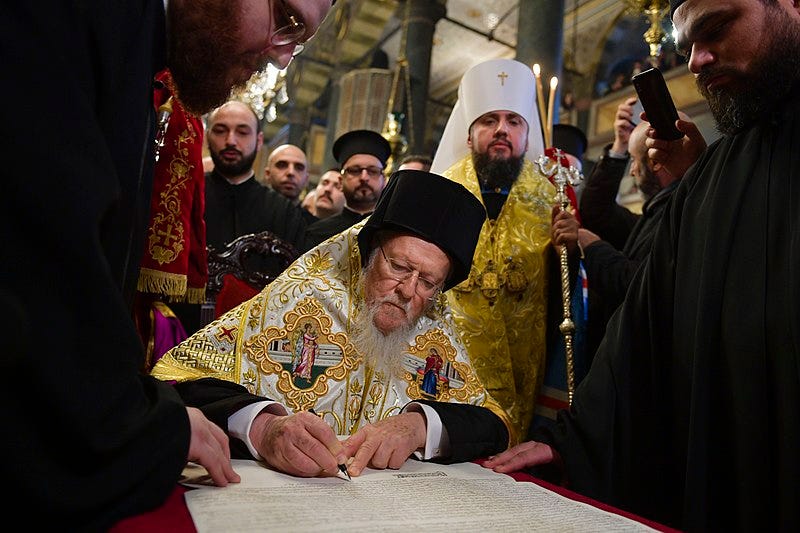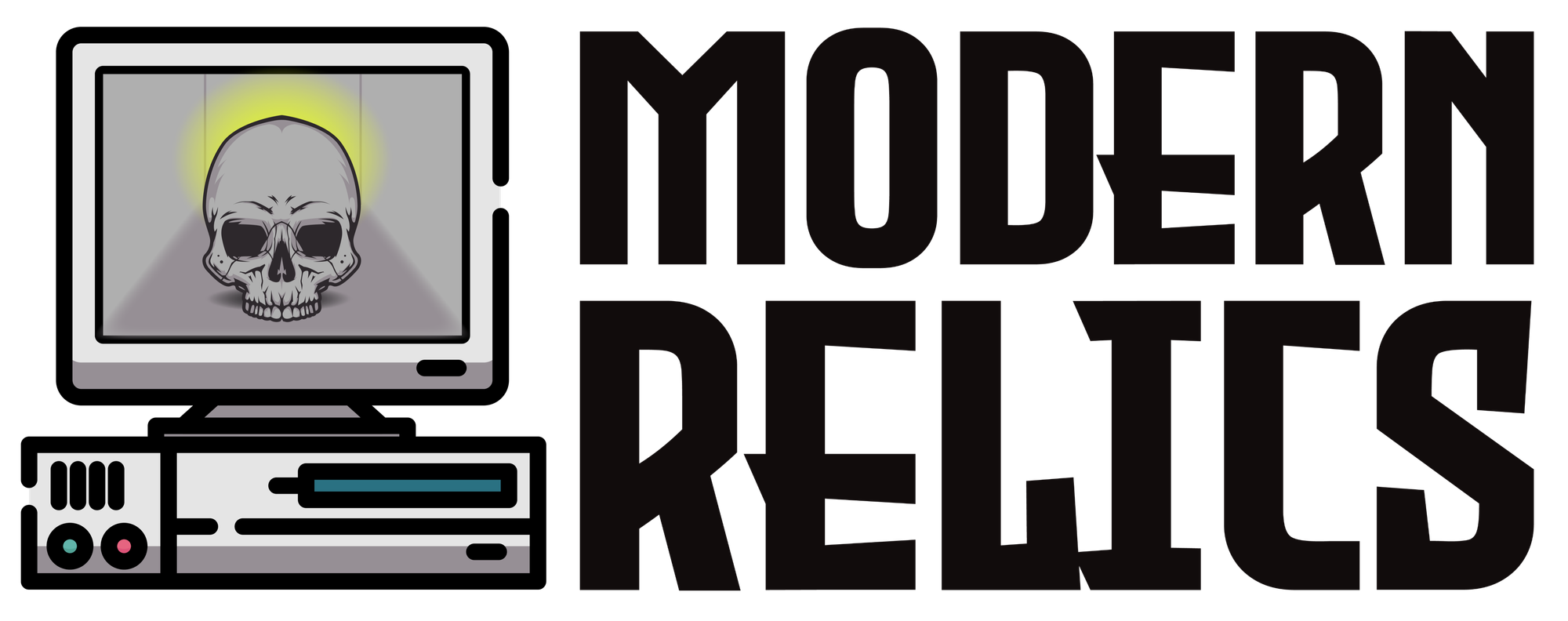Russia vs Ukraine is a church thing too
Something a little different today
In this edition of Modern Relics I was going to do a post that contained an incongruous mix of serious Ukraine stuff and silly hijinks from Relient K’s recent tour. Given the events of today it felt a bit off, so I’m going to split them into two posts - one today, and one (hopefully!) tomorrow.
The goal of this newsletter is not to do news, but I wrote this post last night mostly to wrap my own head around the religious dimension to the unfolding crisis in Ukraine. Having a working knowledge of this kind of thing is part of my job, but I’m also personally interested in how these military conflicts express themselves religiously and culturally.
Orthodox Church governance structures are incredibly Byzantine (lol) – so I hope I don’t misrepresent anything in this summary. If I do, let me know and I’ll do my best to correct it while keeping things as short and simple as possible.
Moscow vs Constantinople
For an ex-Soviet country, Ukraine is still extremely religious – 82% of Ukranians profess some form of Christianity. In fact, tensions over Ukrainian independence have already split Orthodoxy – the second-largest Christian communion in the world. Now it could have an effect on the Catholic Church as well.
Basically, there were three major Orthodox churches in Ukraine after the fall of the Soviet Union: an independent one that was formed in 1921, an independent one that formed in 1992, and one under the jurisdiction of the Russian Orthodox Church (the Moscow Patriarchate).
Only the Moscow Patriarchate was recognised by (in communion with) the Ecumenical Patriarchate of Constantinople, which is basically the headquarters of the Othodox Church generally. The other Ukrainian Orthodox churches were considered schismatic, and their sacraments were not recognised by other Orthodox churches worldwide, which is a big deal.

The Russian Orthodox Patriarch Kirill has backed Vladimir Putin’s expansion into Ukraine and collaborates closely with the Kremlin. But in 2018, four years after the Russian government’s annexation of Crimea, Constantinople announced it would grant the “Church of Ukraine” autocephaly (independence), something Ukranian presidents and clerics alike had been pushing for a while.
The schismatic churches were legitimised and (along with a small part of the already-recognised Moscow Patriarchate church) formed a united Ukranian Orthodox Church outside the control of Russian Patriarch Kirill. The Russian Orthodox church immediately cut all ties with Constantinople, because it claims only it has jurisdiction over the See of Kyiv, and therefore Orthodoxy in all of Ukraine.
What remains of the Moscow Patriarchate church is still in communion with Moscow, which means there are two rival Orthodox churches operating in Ukraine. According to Andreja Bogdanovski at the University of Buckingham, the schism is a major factor in Putin’s decision to invade.
TL;DR: Russia’s annexation of Crimea split the Orthodox Church into two factions, one aligned with Moscow and the other with Constantinople.
The Vatican angle
To make things more confusing, there are also Eastern Catholic churches in Ukraine that look and function a lot like Orthodox churches, but are in communion with Rome and the Pope instead. These autonomous churches are usually led by a Patriarch, who is the head bishop but submits to the Pope.
For various historical and USSR-related reasons, the Ukrainian Greek Catholic Church (UGCC) is led by a Major Archbishop instead of a Patriarch, despite being the largest Eastern Catholic church in the communion. It has been seeking a Patriarch of its own for some time, which would elevate it to the highest status possible for an Eastern Catholic church.
Last week, a representative of the UGCC made the request to the Vatican again. According to The Pillar it’s under consideration, but if it went ahead it would put the Holy See in a difficult spot diplomatically with the Kremlin. It would also jeopardise the Vatican’s ecumenical relations with the Russian Orthodox Church, which it has been fostering for some time as a peacemaking exercise.
From The Pillar’s interview with Ukrainian church historian Anatolii Babynskyi:
“As long as the Moscow Patriarchate is a tool of Russia's state policy, it will be fruitless to try to convince the Moscow Patriarchate that the Greek Catholic Patriarchate in Ukraine is in no way a threat to the ecumenical dialogue. In their eyes, it undermines their claims for the political and ecclesiastical dominance in Eastern Europe.”
The Pope and Patriarch Kirill had been planning to meet in June or July this year, but who knows if that will still go ahead.
On social media
As things unfold, I’m seeing a few prayers from people on Twitter in between the dozens of tweets from armchair experts.
RNS reporter Jack Jenkins is collating and retweeting religous angles to the crisis on his Twitter as well, including this image from CNN of people in Kharkiv, Ukraine praying in the street as the invasion begins.
A few more links
- Claire Giangravé at the Religion News Service also has a good summary of the situation at the Vatican if you want to read further
- Religion Dispatches: Make No Mistake, If There’s A War Between Russia And Ukraine, It Will Be A Religious War
- Here’s a general explainer of the political side, from the ABC
- RNS: Putin is after more than land — he wants the religious soul of Ukraine
- RNS: Next year in Kyiv?
Join me next time for what will be a much lighter and pop culture-focussed edition of Modern Relics!

